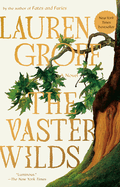
Lauren Groff's fifth novel, the riveting The Vaster Wilds, combines visceral detail and magisterial sweep as it chronicles a runaway servant's struggle to endure a bitter colonial winter.
Grounding facts are rare--as in Matrix, Groff's previous work of historical fiction, the outlook perhaps feels more timeless than period-specific--but gradually the scene emerges: the year is 1610 and the teenage protagonist has escaped the famine- and disease-ridden Jamestown colony in Virginia. Not long ago, "the girl," as she is almost always called, sailed from England, accompanying her mistress and the woman's second husband, a minister, and intellectually disabled daughter, Bess. The girl fell in love with a Dutch glassblower while on board the ship, but a violent storm separated them.
Flashbacks to these and other traumatic events seep into her mind as she copes with the harsh reality of life in the wilderness. With faith and resilience, she finds shelter, builds fires, repairs her garments, and subsists on raw fish, duck eggs, and berries. However, terror of the forest and its creatures never leaves. Groff (Fates and Furies; Arcadia) briefly departs from the close third-person narration to detail masterfully plotted histories of a Jesuit priest turned hermit who deems her a she-devil and a soldier who pursues her, ready to take out his sadism on a "murderess."
The mystery of the incident to which he's referring remains until near the novel's end, adding a filament of suspense to what becomes a classic study of solitude. The result is as evocative and affecting as Girl with a Pearl Earring--and as brutal as anything Cormac McCarthy has written. --Rebecca Foster, freelance reviewer, proofreader and blogger at Bookish Beck

